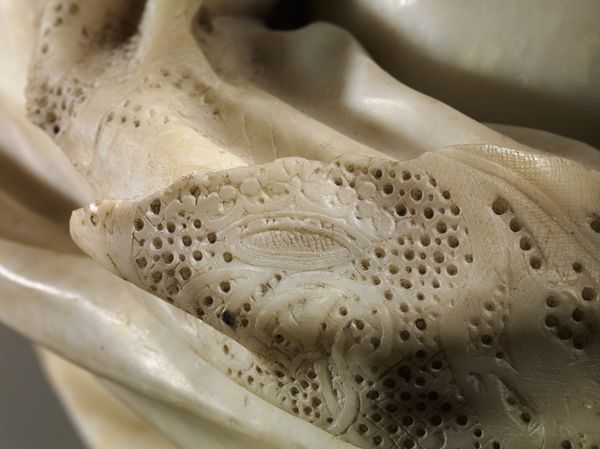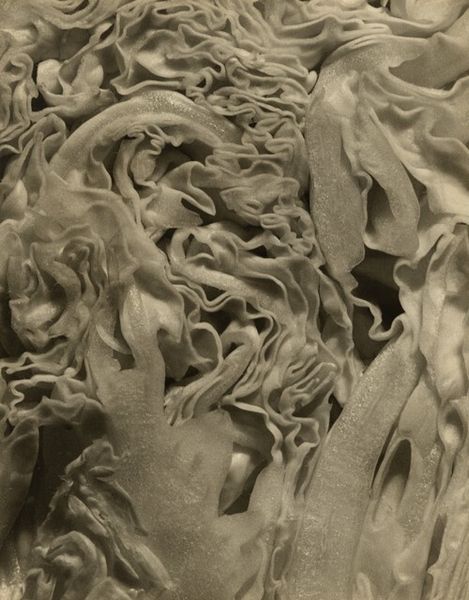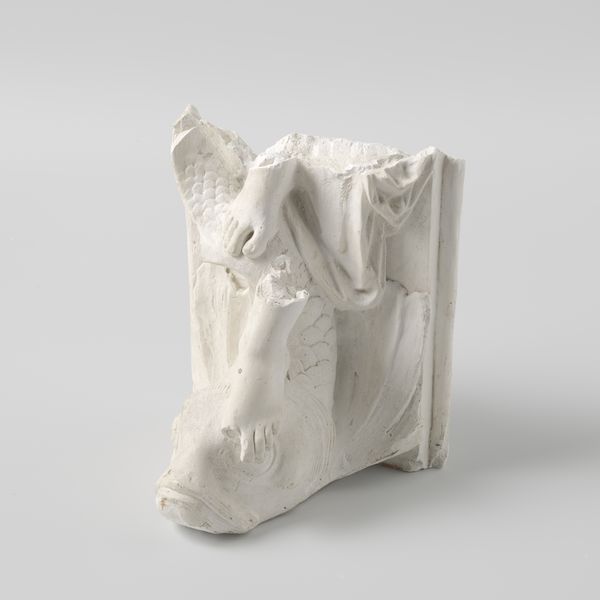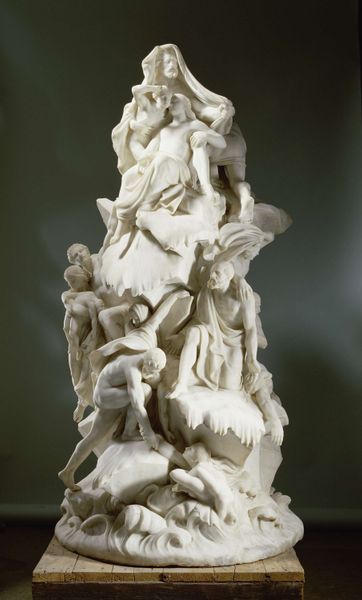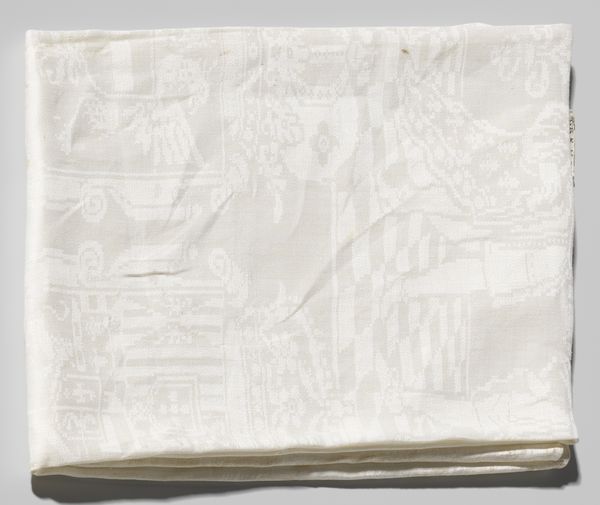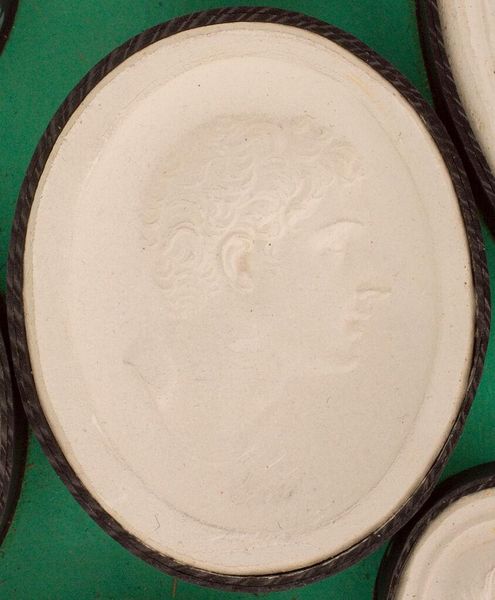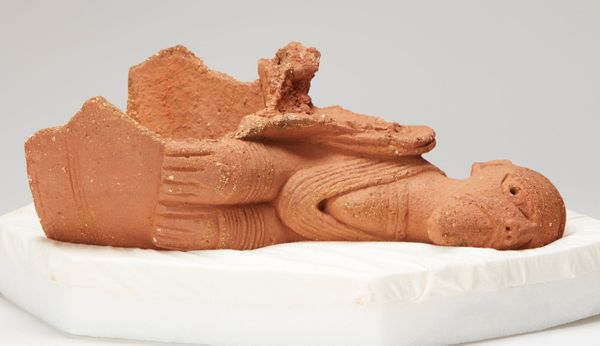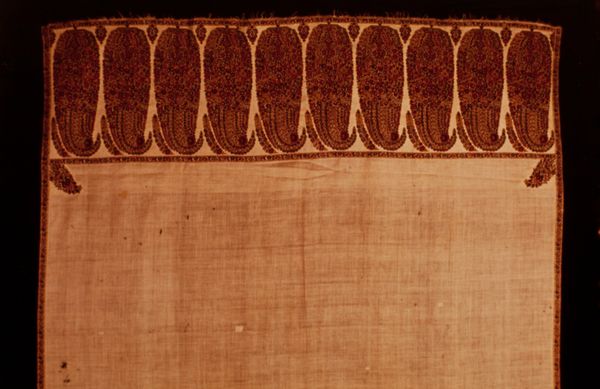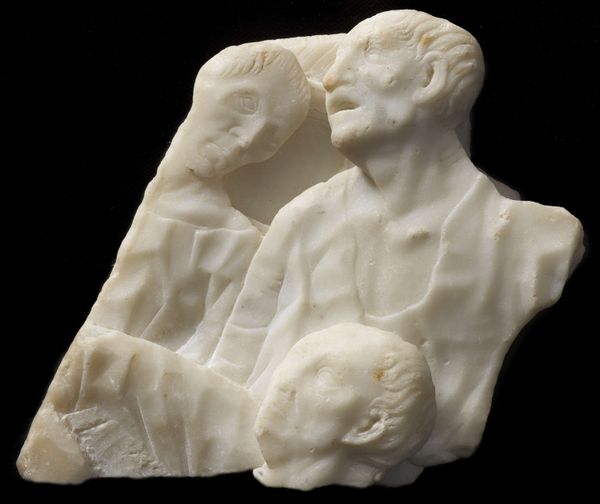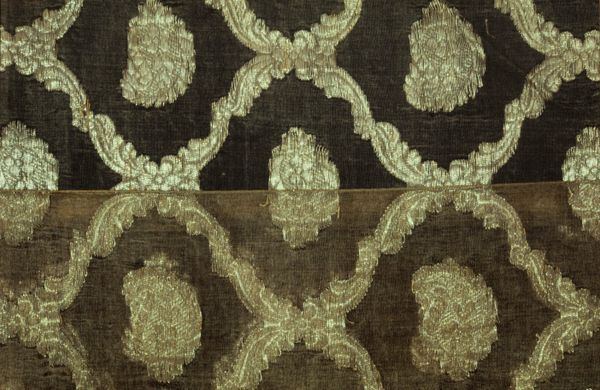
relief, sculpture, marble
#
portrait
#
statue
#
sculpture
#
relief
#
figuration
#
sculpture
#
marble
#
rococo
Copyright: Public domain
Editor: So, this is a detail of Jean-Baptiste Pigalle’s "Madame De Pompadour," made in 1751, from marble. It’s… surprisingly tactile, even just looking at it. All those folds! What’s your take on this? Curator: The texture speaks volumes, doesn't it? Think about the labor involved in extracting, transporting, and then meticulously carving this marble. It wasn't just about aesthetic representation; it was a display of wealth and power – both Madame de Pompadour's and the artist’s. What does the drape suggest to you? Editor: It’s so incredibly detailed. I’d imagine that controlling the material and making the marble appear like soft fabric would require lots of planning and technique. Curator: Absolutely. And consider the social context. Madame de Pompadour was a commoner who rose to be a powerful figure at court. The very act of commissioning such a costly piece made from Italian marble… what does that tell us about the blurring lines between aristocracy and rising middle-class consumption during the Rococo period? Editor: Well, it definitely wasn’t something your average person could afford. So this piece reveals the social structures of the 18th century in France, the process that someone went through, and their place in the world through consumption, and creation. Curator: Exactly! It's a material testament to a specific historical moment, a nexus of artistic skill, economic power, and social climbing, all embedded in this single chunk of stone. Editor: Seeing it this way helps me to look deeper into what a work of art might mean beyond its obvious surface. Thanks!
Comments
No comments
Be the first to comment and join the conversation on the ultimate creative platform.
